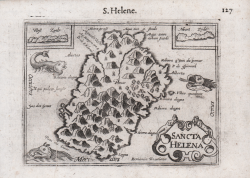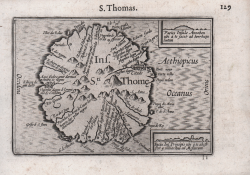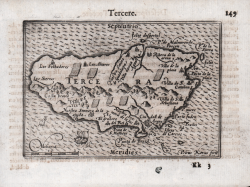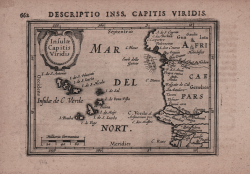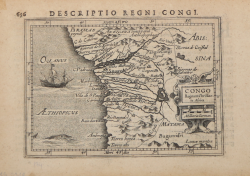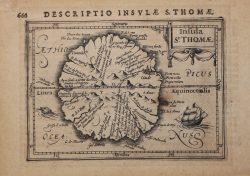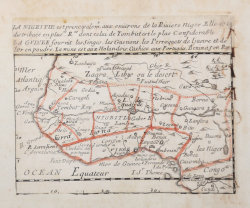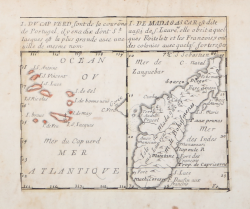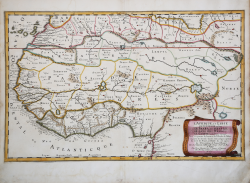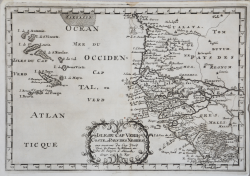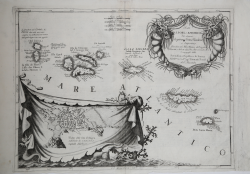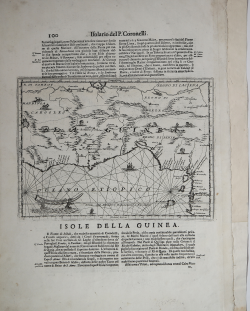Insula Capitis Viridis
Jodocus HONDIUS
Code:
MS2370
Measures:
135 x 95 mm
Year:
1612 ca.
Printed:
Amsterdam
Congo Regnum Christian. In Africa
Jodocus HONDIUS Jr.
Code:
MS2368
Measures:
137 x 95 mm
Year:
1616 ca.
Printed:
Amsterdam
Insula St. Thomae
Jodocus HONDIUS Jr.
Code:
ms2372
Measures:
135 x 100 mm
Year:
1616 ca.
Printed:
Amsterdam
I. du Cap Verd… / I. de Madagascar
Pierre DUVAL
Code:
S39995.62
Measures:
122 x 100 mm
Year:
1656 ca.
Printed:
Paris
L'Afrique ou Lybie ulterieure ou font Le Saara,uo Desert, le Pays...
Nicolas SANSON
Code:
ms1340
Measures:
550 x 350 mm
Year:
1659 ca.
Printed:
Paris
Isles du Cap Verd Coste et Pays des Negres..
Nicolas SANSON
Code:
S4372
Measures:
300 x 185 mm
Year:
1660 ca.
Printed:
Paris
Isole Azzori, o Azzoridi dette altrimenti Acipitrum, Tertia,...
Vincenzo CORONELLI
Code:
S4868
Measures:
620 x 460 mm
Year:
1690 ca.
Printed:
Venice
Isole della Guinea
Vincenzo CORONELLI
Code:
s14074
Measures:
310 x 225 mm
Year:
1690 ca.
Printed:
Venice


